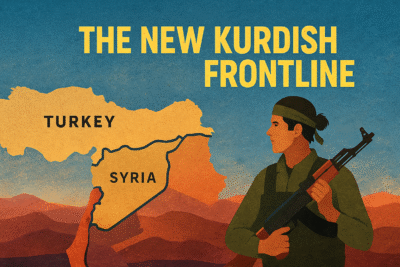
The massive earthquake of 7.6 magnitude that hit Myanmar and Thailand has left hundreds dead. (Image: https://x.com/UNinMyanmar)
Earthquakes are among nature’s most powerful and sudden geological events, causing the ground to shake violently as energy stored within Earth’s crust is released. These seismic events have shaped our planet’s surface for billions of years and continue to remind us of the dynamic forces at work beneath our feet.
We thought of explaining the mechanism of earthquakes against the backdrop of devasting tremors in Myanmar and Thailand, killing hundreds of people. This Reuters LIVE report gives you the latest on the casualty updates. Here, we try to explains the mechanisms behind earthquakes with detailed descriptions of what the relevant sketches would look like:
The foundation: Where Earth decides to shake up the world
Earth’s outermost layer, called the crust, is not a single continuous shell but is broken into large sections of rock known as tectonic plates. These plates float on top of a fluid-like layer of convection currents deep underground, fitting together like a giant puzzle to create Earth’s surface1.
Sketch 1: Tectonic plates on Earth

These tectonic plates are constantly in motion, though this movement typically occurs very slowly—only a few centimeters per year2. The movement is driven by convection currents in the semi-fluid mantle beneath the crust, causing the plates to drift, collide, separate, or slide past one another1.
The mechanism: Elastic rebound theory
The primary cause of most earthquakes is explained by the elastic rebound theory. When tectonic plates move against each other, they don’t slide smoothly. Instead, friction along their boundaries causes them to become stuck while pressure continues to build1.
Sketch 2: Elastic deformation and rupture

This illustration is divided into three panels showing a sequence:
Panel 1: Two blocks of rock on either side of a fault line, perfectly aligned
Panel 2: The blocks becoming increasingly deformed as stress builds up, with arrows showing the direction of force while the fault line remains locked
Panel 3: The sudden rupture and shift of the blocks to new positions, with wavy lines emanating from the fault representing seismic waves
Think of it like a tug-of-war game: as both sides pull on the rope (analogous to tectonic pressure), tension builds in the rope (the fault zone). When one side suddenly lets go (the fault slips), all that stored energy is released at once, sending the other person tumbling (the earthquake shaking)1.
The rocks on either side of a fault may move only a few centimeters per year, but this movement produces enormous stress and strain in the rocks. As movement continues over years, or even centuries, stress and strain increase, storing more and more elastic energy in the rocks2. When the accumulated stress finally exceeds the frictional forces keeping the plates locked together, the fault suddenly slips, releasing the stored energy in the form of seismic waves that radiate outward and cause the ground to shake4.
Types of faults, how they move, and also move you
Different types of earthquakes occur based on how tectonic plates interact at their boundaries. There are three main types of faults that cause earthquakes, each with distinctive movements3.
Sketch 3: The three main fault types

This drawing would be divided into three sections showing:
Section 1: Normal fault – Two blocks with one sliding downward relative to the other, with arrows showing tension forces pulling apart
Section 2: Reverse fault – Two blocks with one pushing up and over the other, with arrows showing compression forces pushing together
Section 3: Strike-slip fault – Two blocks sliding horizontally past each other, with arrows showing shearing forces in opposite directions
Normal faults
Normal faults occur when tension forces pull the crust apart, causing one block to slide downward relative to the other along a sloping fault line. On geologic maps, normal faults are typically shown by a line with a small perpendicular line indicating the direction of the downward-moving block3.
Reverse faults
Reverse faults form when compression forces push rocks together, forcing one block to move upward and over the adjacent block. These are drawn on maps as lines with “teeth” symbols pointing in the direction of the overriding block3.
Strike-slip faults
Strike-slip faults result from shear stress, where blocks move horizontally past each other with little vertical motion. The San Andreas Fault in California is a famous example of a strike-slip fault. On maps, these are represented by lines with half-arrows on each side showing the direction of movement23.
What terms to know about earthquake propagation
When an earthquake occurs, it originates at a specific point underground known as the focus (or hypocentre), and the energy radiates outward from this point in all directions as seismic waves12.
Sketch 4: Focus and epicentre

This cross-sectional view shows:
– The Earth’s surface with buildings on top
– Underground layers with a fault line
– A star marking the focus (earthquake origin point) along the fault
– A point directly above on the surface marked as the epicentre
– Concentric circles or wavy lines emanating from the focus representing seismic waves
The epicentre is the point on Earth’s surface directly above the focus. Maximum damage typically occurs at or near the epicentre, although this can vary depending on local geological conditions, the depth of the focus, and the magnitude of the earthquake2. As seismic waves travel from the focus, they cause the ground to move in different ways. Body waves travel through Earth’s interior, while surface waves travel along the ground surface and typically cause the most damage1.
Earthquakes follow some principles
Scientists and educators often use models to demonstrate how earthquakes work. One popular classroom model is the “Earthquake Machine,” which uses simple materials to show how energy builds up and is suddenly released in an earthquake5.
Sketch 5: A model of earthquake

In this model, various types of waves are shown in the way they contribute to creating an earthquake kilometres below the surface of Earth.
Let’s rew/mind
Earthquakes are the result of a complex interplay between Earth’s tectonic plates, the buildup of elastic energy in rocks, and the sudden release of that energy when the stress overcomes the friction holding rocks in place. The movement along faults—whether normal, reverse, or strike-slip—determines the type of earthquake that occurs, while the location of the focus and epicentre influences how the seismic energy propagates to the surface.
Understanding these mechanisms not only helps us comprehend one of nature’s most powerful phenomena but also assists in developing better prediction methods and designing structures that can withstand these seismic events. While we cannot stop earthquakes from happening, our increasing knowledge about their causes and behaviours continues to improve our resilience in the face of these geological events.
Sources:
- https://study.com/learn/lesson/earthquake-causes-effects-locations.html
- https://www.britannica.com/video/Earthquakes-fracture-rock-masses-fault-line/-68347
- https://www.e-education.psu.edu/earth520/content/l7_p3.html
- https://www.americangeosciences.org/critical-issues/faq/why-and-where-do-earthquakes-happen
- https://www.iris.edu/hq/inclass/animation/earthquake_machine__basic_one_block__simple_graph_animated
- https://oceanexplorer.noaa.gov/facts/tectonic-features.html
- https://www.bgs.ac.uk/discovering-geology/earth-hazards/earthquakes/what-causes-earthquakes/
- https://www.geolsoc.org.uk/~/media/shared/documents/education%20and%20careers/Resources/Presentations%20and%20activity%20sheets/Earthquakes/Earthquakes%20presentation%20Teachers%20notes.pdf?la=en
- https://www.iris.edu/hq/inclass/animation/earthquake_faults_plate_boundaries__stress
- https://www.mtu.edu/geo/community/seismology/learn/earthquake-cause/
- https://serc.carleton.edu/NAGTWorkshops/visualization/examples/57570.html
- https://ucmp.berkeley.edu/geology/tecmech.html
- https://www.visualcapitalist.com/visualizing-the-power-and-frequency-of-earthquakes/
- https://manoa.hawaii.edu/exploringourfluidearth/physical/ocean-floor/continental-movement-plate-tectonics
- https://www.youtube.com/watch?v=aMO3zZZqX5U
- https://opentextbc.ca/geology/chapter/1-5-fundamentals-of-plate-tectonics/
- https://www.usgs.gov/faqs/what-earthquake-and-what-causes-them-happen
- https://www.livescience.com/37052-types-of-faults.html
- https://scienceexchange.caltech.edu/topics/earthquakes/what-causes-earthquakes
- https://www.britannica.com/science/earthquake-geology
- https://www.nps.gov/subjects/geology/plate-tectonics-types-of-plate-boundaries.htm
- https://www.cbsnews.com/news/what-causes-earthquakes/
- https://study.com/learn/lesson/earthquake-parts-description.html
- https://serc.carleton.edu/ANGLE/educational_materials/activities/205287.html
- https://kids.nationalgeographic.com/science/article/earthquake
- https://www.space.com/earthquakes-facts-science
- https://www.jpl.nasa.gov/edu/teach/activity/modeling-crustal-folds/
- https://www.mtu.edu/geo/community/seismology/learn/earthquake-location/
- https://www.pnsn.org/outreach/about-earthquakes/plate-tectonics
- https://www.freepik.com/free-photos-vectors/earthquake-diagram
- https://www.earthquakeauthority.com/blog/2020/understanding-plate-tectonic-theory
- https://www.freepik.com/vectors/earthquake-diagram
- https://www.nps.gov/subjects/geology/plate-tectonics-the-unifying-theory-of-geology.htm
- https://www.freepik.com/vectors/earthquake-diagram/4
- https://ugc.berkeley.edu/background-content/plate-tectonics/
- https://www.vecteezy.com/vector-art/593812-diagram-showing-earthquakes-and-movement-of-the-crust
- https://www.dreamstime.com/illustration/earthquake.html




Hi there.
thefreepen.in, Your consistency and kindness in this space don’t go unnoticed.
I recently published my ebooks and training videos on
https://www.hotelreceptionisttraining.com/
They feel like a hidden gem for anyone interested in hospitality management studies. These ebooks and videos have already been welcomed and found very useful by students in Russia, the USA, France, the UK, Australia, Spain, and Vietnam—helping learners and professionals strengthen their real hotel reception skills. I believe visitors and readers here might also find them practical and inspiring.
Unlike many resources that stay only on theory, this ebook and training video set is closely connected to today’s hotel business. It comes with full step-by-step training videos that guide learners through real front desk guest service situations—showing exactly how to welcome, assist, and serve hotel guests in a professional way. That’s what makes these materials special: they combine academic knowledge with real practice.
With respect to the owners of thefreepen.in who keep this platform alive, I kindly ask to share this small contribution. For readers and visitors, these skills and interview tips can truly help anyone interested in becoming a hotel receptionist prepare with confidence and secure a good job at hotels and resorts worldwide. If found suitable, I’d be grateful for it to remain here so it can reach those who need it.
Why These Ebooks and Training Videos Are Special
They uniquely combine academic pathways such as a bachelor of hospitality management or a master’s degree in hospitality management with very practical guidance on the front desk agent description. They also cover the hotel front desk job description, and detailed hotel front desk duties and responsibilities.
The materials go further by explaining the reservation systems in hotels, check-in and check-out procedures, guest relations, and practical guest service recovery—covering nearly every situation that arises in the daily business of a front office operation.
Beyond theory, my ebooks and training videos connect the academic side of resort management with the real-life practice of hotel front desk duties and responsibilities.
– For students and readers: they bridge classroom study with career preparation, showing how hotel and management course theory link directly to front desk skills.
– For professionals and community visitors: they support career growth through questions for reception interview, with step-by-step questions to ask a receptionist in an interview. There’s also guidance on writing a strong receptionist description for resume.
As someone who has taught resort management for nearly 30 years, I rarely see materials that balance the academic foundation with the day-to-day job description of front desk receptionist in hotel so effectively. This training not only teaches but also simulates real hotel reception challenges—making it as close to on-the-job learning as possible, while still providing structured guidance.
I hope the owners of thefreepen.in, and the readers/visitors of thefreepen.in, will support my ebooks and training videos so more people can access the information and gain the essential skills needed to become a professional hotel receptionist in any hotel or resort worldwide.
Wishing you continued success with your site—truly.